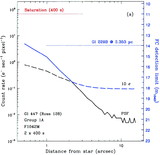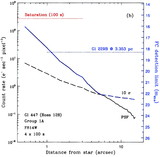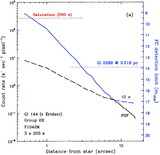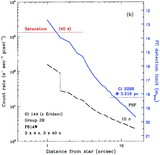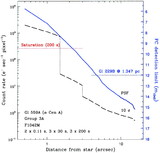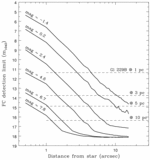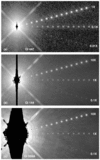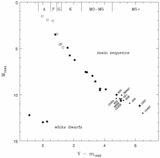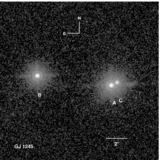Image Details
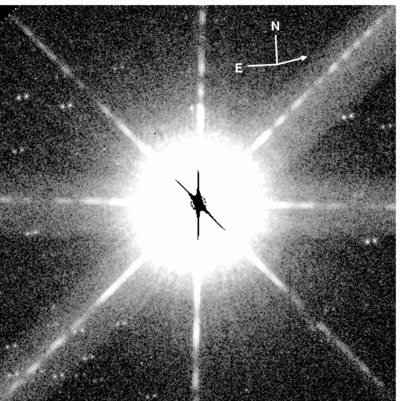
Caption: Fig. 1.
Sum of 400 s, F1042M images of Gl 551 (Proxima Centauri) recorded with the PC at two epochs separated by 21 days. The second‐epoch image has been rotated and shifted so that the orientation and position of Gl 551 coincide with those of the first epoch. The field of view is 22﹩\farcs﹩8 × 22﹩\farcs﹩8, centered on the target. The roll offset between the two epochs is 44°, as evidenced by the angular separations of the two sets of pupil diffraction spikes and the two charge "bleeds" from the saturated images of the target (shown in black). The compass indicates the directions of north and east, while the arrow indicates the direction of Gl 551’s proper motion. Note that all distant field sources appear double with a separation equal to 21 days of proper motion (0﹩\farcs﹩222, or 4.8 PC pixels) and a position angle opposite to that of Gl 551’s proper motion. Inspection of summed images such as this one permit immediate discrimination of brighter field sources from prospective FCs. Any FC would appear either as a single source or as a double source with a separation and position angle different from that expected for distant background sources.
Copyright and Terms & Conditions
© 2000. The American Astronomical Society. All rights reserved. Printed in U.S.A.


